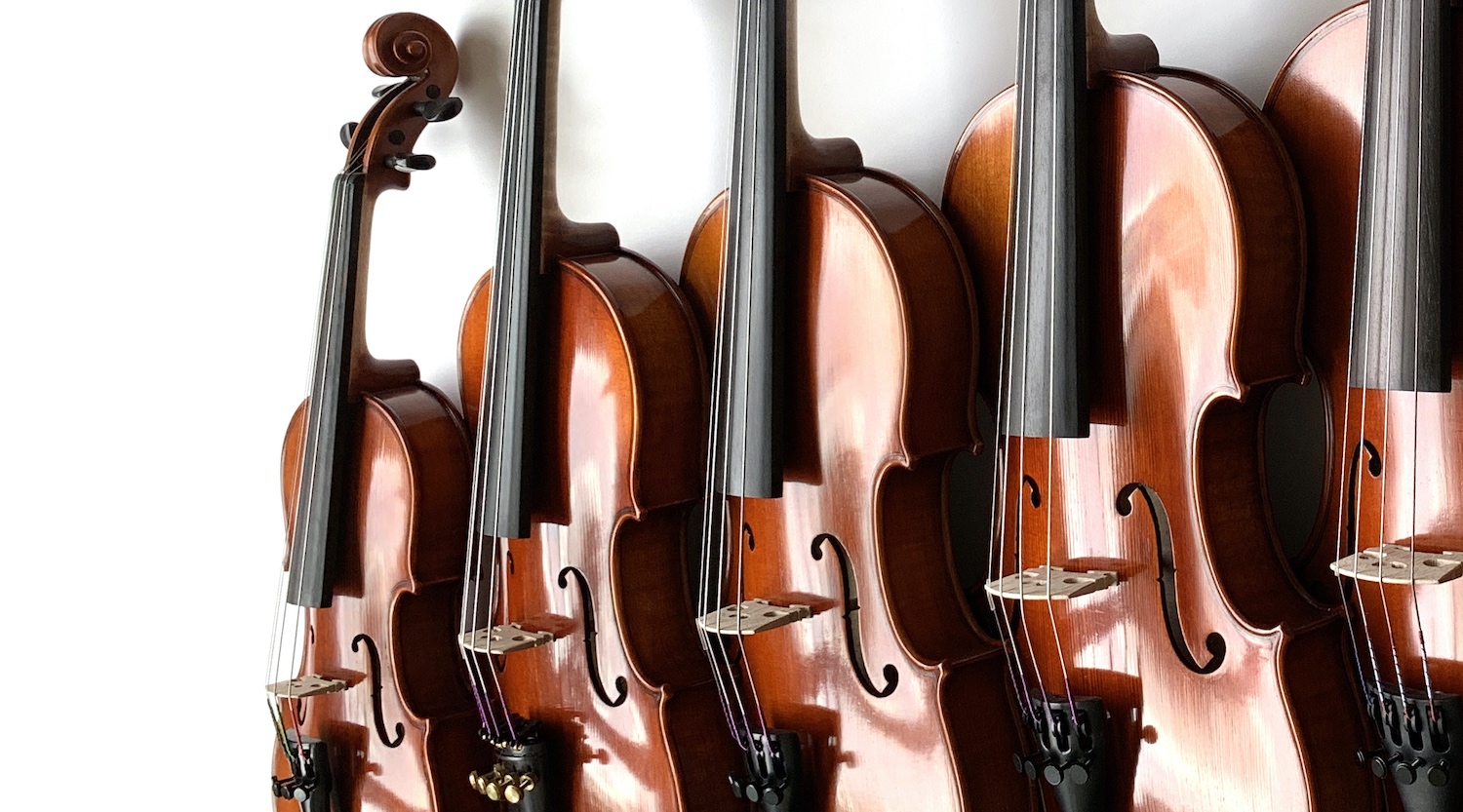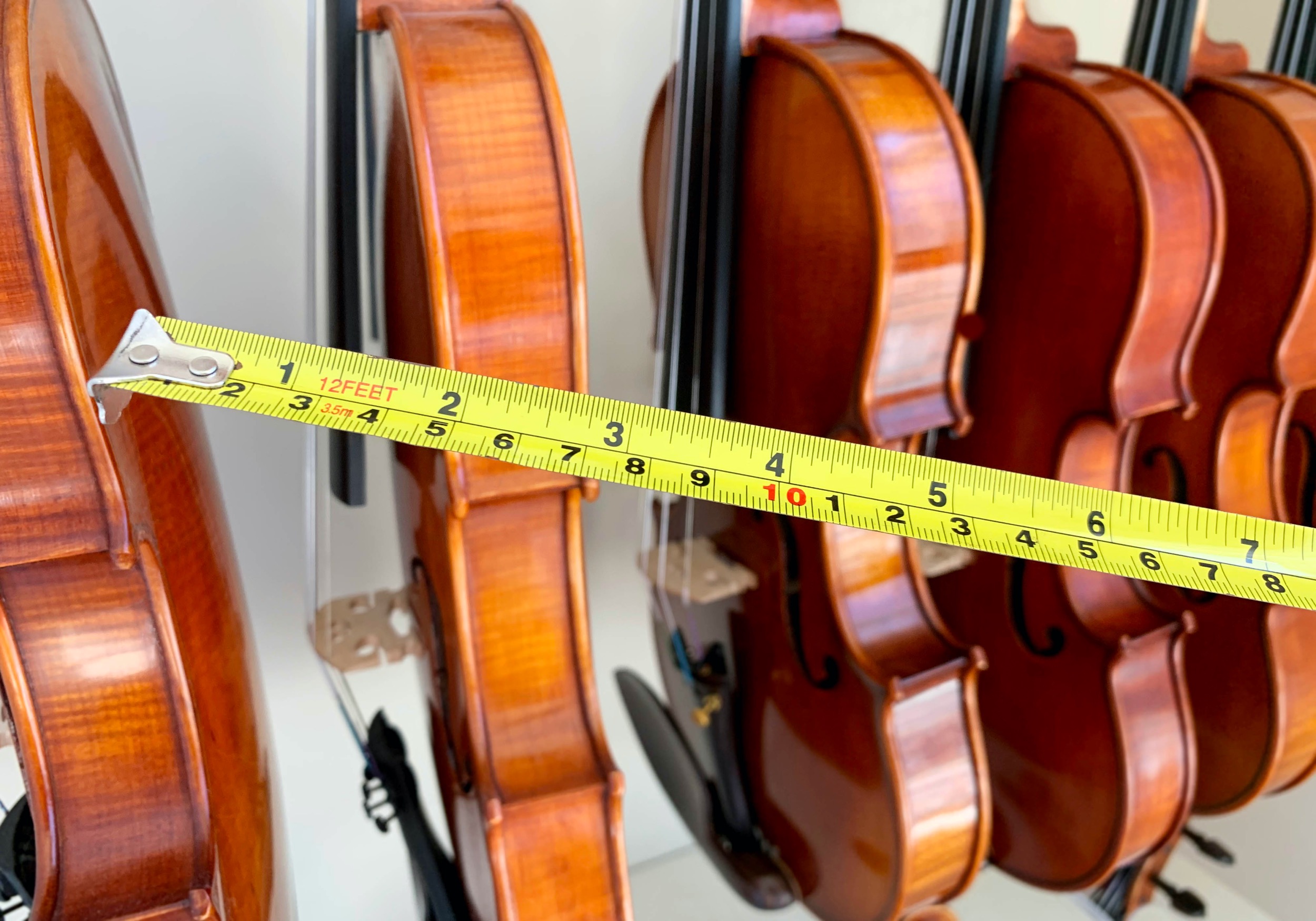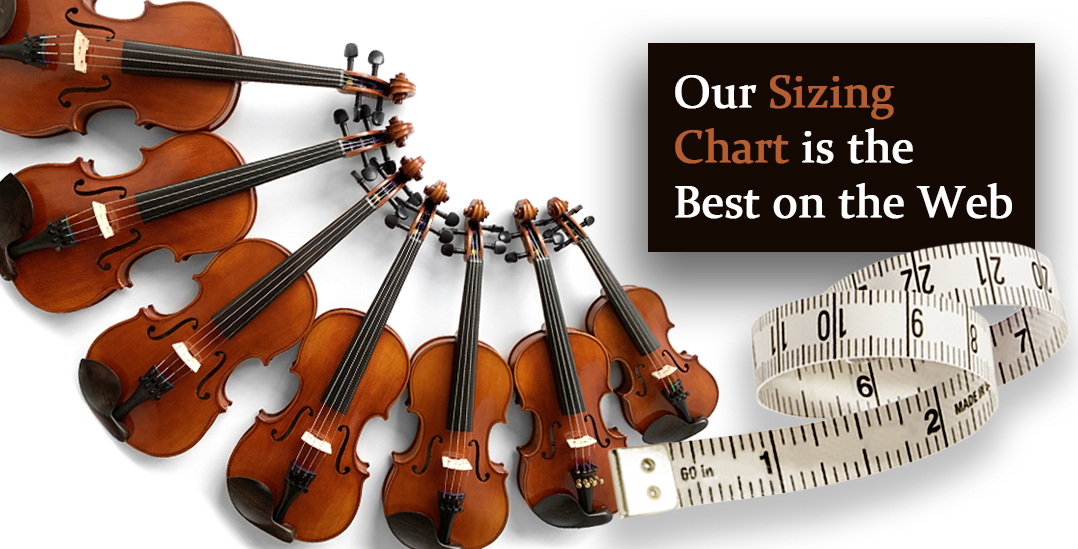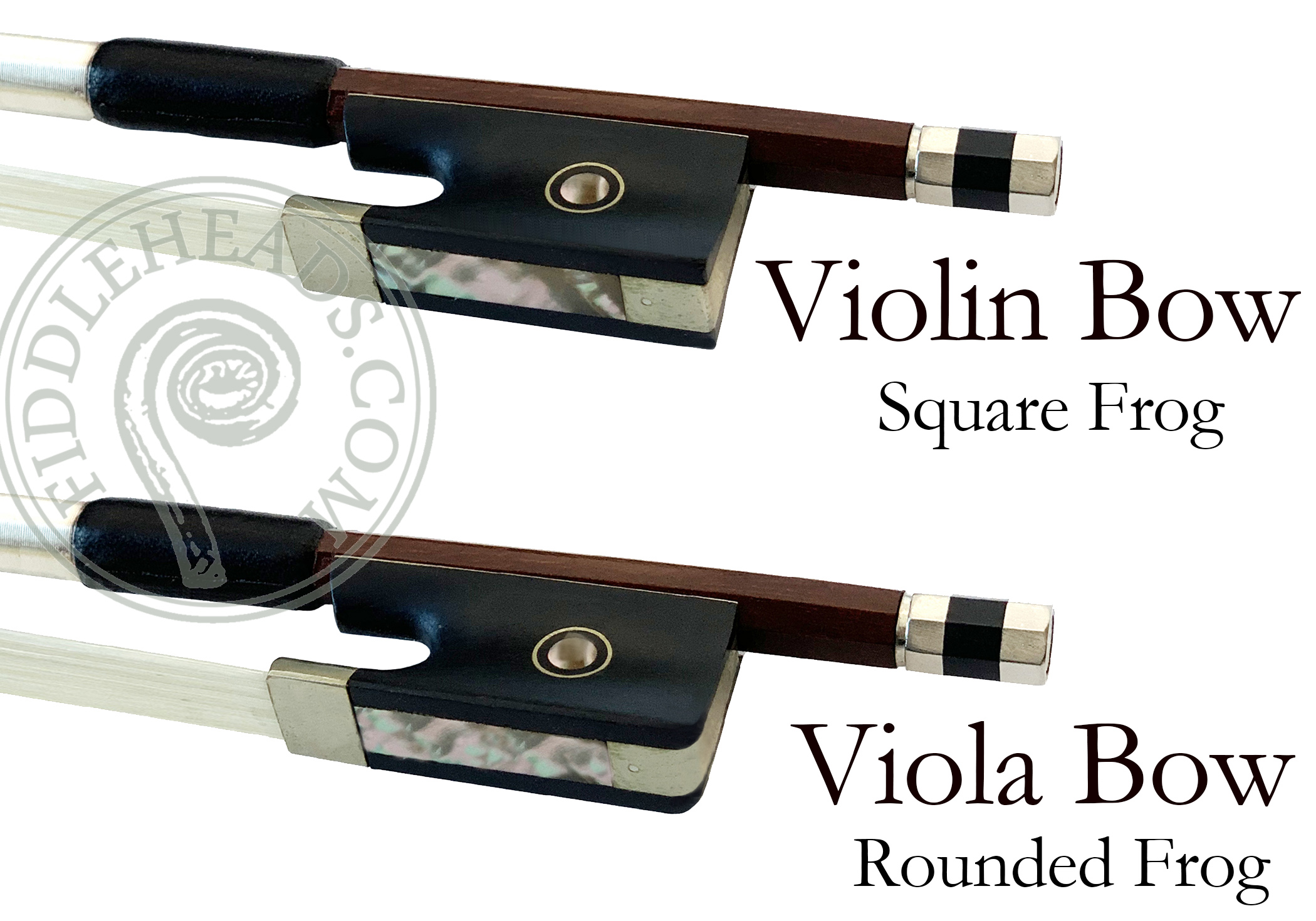The Best Violin & Viola Sizing Charts on the Web!
Violin and Viola Sizing & Instrument Sizes Charts!
Compliments of Award-Winning and Eco-Responsible Fiddleheads Violin Studio
I'm Rhiannon Nachbaur, Fiddleheads owner, violin expert, retired symphony violinist, orchestral concertmaster and violin teacher.
I compiled these popular charts to assist violinists, violists and fiddlers in selecting the correct sized instrument for themselves or their children. You'll see why this is the most visited and referenced size chart for violins and violas on the web since 2002!
Thank you for visiting Fiddleheads and please contact me if you require any assistance ordering the right size violin from my shop. I sincerely hope my superb service and free expertise earns your purchase and loyalty!
Skip to Charts - Skip to Instructions
Detailed Instructions
1. Age of Player
Children
Some children are exceptions to the rule, but this chart provides a general age range for these instruments.
As a teacher I have worked with 10-year-olds who played full size violins. The most important thing in deciding the correct size is that the student can comfortably play the instrument in tune. Fourth finger, or pinky, reach and intonation (can it be played in tune?) may be the deciding factor.
I've seen students playing a slightly large instrument, especially when approaching full size as preteens. One student played a full size starting on her 10th birthday! It looked a bit big, but she could play it in tune and truly appreciated the bigger sound the full size produced. She grew into it over the summer and her parents were glad they didn't buy a 3/4 or else she would have outgrown it in a few months.
Adults
All adults use a full size violin, with the exception of very small adults and some teens who are more the size of a child. These players will sometimes play a 3/4, though they will get a better sound from a 7/8 size violin.
The advantage to a 7/8 is a big sound with a smaller scale for playability. 7/8 size violins are more difficult to locate used, however most of my new violins are available in 7/8 size and I can also have a violin custom made for you.
Helpful Shortcuts: About Fiddleheads - Business & Music Awards Won - General Violin Advice Articles |

2. Player's Arm Length
To accurately discern which size is correct for the player, run a measuring tape from the left side of the player's neck to palm of their outstretched left arm and second time from the neck to the wrist. (The arm must not be bent at the elbow and is at a right angle to the body. Palm faces up at the ceiling.)
Violists: measure from neck to palm at the base of the fingers, not the wrist. Violas are sized large.
Check the measurements on the violin chart above:
PALM: The neck to palm measurement indicates the largest size that would be appropriate. Only go larger than this size if the child is growing rather quickly and if you are certain the teacher will not object to the large violin.
WRIST: The neck to wrist measurement provides a comfortable size. Suzuki teachers in particular are trained to teach players on a violin fitting this way (not too large).
The photo above shows my son measuring to a point between, which is another way to determine a comfortable size with a bit of room to grow.
As stated in point 1, the most important thing in playing a large-ish instrument is that the player can comfortably play in tune. (Again, 4th finger intonation may be the deciding factor).
Please note that even left-handed players play a regular, right-handed violin. Lefties need not worry they can't play the violin! I have taught many lefties and they play the same as everyone else.
Even simpler
If you have the violin you are trying to size with the young student you can simply check it against the player's arm. Have the student hold the violin up on the left shoulder and extending out 45 degrees from their side (not in the front, not to the side.)
Next, ask the player to reach from under the violin to the scroll (curly end) of the violin with their outstretched left hand, curving the fingers around the scroll from below. If the left elbow is slightly bent and comfortable the violin is the proper size. If the elbow is straight and/or the player cannot reach the scroll the instrument is too large.
Finally, if the elbow is bent at a smaller than 90 degree angle and appears very easy to reach the violin may be too small.
For more help on purchasing the correct size from my shop please take your measurements and contact me prior to your order from Fiddleheads.
Helpful Shortcuts: World-Class Setup - My Violins SOUND BETTER than Same Models Sold Elsewhere - Instrument Purchasing for Newbies |

3. Violin or Viola Size
Violins are either "full size" or "fractional. Adults, teens and children age 10-12 play full size. Children play 3/4 and smaller violins depending on their size. The bow used matches the size of the instrument. For example, a 3/4 violin is paired with a 3/4 size violin bow.
*Note that Violas are not sized like violins in fractions, rather they are measured by the length of their bodies in inches. For example, a typical sized viola for a student age 12 has a body 15.5" in length and the same sizing rules do not apply as violas are expected to fit a bit big, but not so big as to tire the player. I tend to recommend violas on the smaller side. Selecting a viola with a big tone is better than a too-large viola for the player.
Helpful Shortcuts: In-Home Trials: Free Symphony Violinist Guidance - Rhiannon's Match-Making Skills - Your Instrument Arrives Ready to Play |

4. Instrument Measurements (Body Length/Total Length)
These measurements vary from maker to maker by as much as 3/4". If you are unsure which sized instrument you have, carefully take two measurements with a tape or string. Violas only require one measurement; the body (measurement #2).
1. Measure first the violin the length of the violin from the top of the scroll to the bottom (excluding the end pin at the bottom).
2. Next measure the body from the "shoulders" of the violin to the bottom. Do not include the jutting-out wood section (the "heel") at the base of the violin's neck in your measurements.
*Note that the width of the violin (measuring the upper or lower "bout") varies widely from maker to maker or style to style. Instruments made in the style of Guarneri tend to have wider lower bouts than Stradivarius or "Strad" models, and thus a bigger volume and depth of tone.
Helpful Shortcuts: 1200+ Customer Testimonials - Violin Technique & Theory Charts - Glossary of Violin Terms |
Oversized Violins: Some Suggestions
So your child is growing like a weed and is too big for the 1/4 violin you purchased last year. Should you buy a 1/2 size violin, which would fit now but may be too small in 6 months? Or should you skip to a 3/4 and let him grow into it?
As a teacher I encounter this dilemma frequently and make the decision to skip a size on a case by case basis. That said, I would never setup a child with a violin that is far too large to be played comfortably (as is the case with the stock photo above).
Choosing to use a larger violin can be a wise choice if the student is growing rapidly and if you are paying a bit more to have a better quality, larger violin rather than buying an intermediate violin and replacing it soon after. Rather than buying two cheaper violins one after another, the larger violin would be used longer, thus it would make sense to invest a bit more money into it.
In my time teaching I have had many students skip a size and only once was it not a wise choice. Once a 10-year-old student's family had a good line on a nice 3/4 violin, but it was an inch or so too large for their daughter. Taking her age into consideration, as well as the quality of the instrument in question, I thought it best for her to take the size jump. Surprisingly though, the girl did not grow any taller for three years.
Now, as a very petite teen, the violin fits her perfectly, though most people at this age are in a 4/4. She was just destined to be petite. realise the jump was not appropriate for her; but how do you know the child will stop growing? Thankfully the girl's mother and I laugh at the situation now and all worry is gone: She plays wonderfully. If anything, the student really learned to stretch for her 4th finger notes and has excellent intonation!
The important thing here is that the student is able to or very close to playing the 4th finger in tune. If they can reach this fingering with the properly curved, arched finger shape (not straight) the violin will be comfortably usable.
For children skipping a size and playing a slightly large violin you should carefully consider playing a lighter weight violin over a heavy one. Heavier or bulkier violins can be harder to hold up, overextended for long periods of time causing the student to not want to practice for long. A student who has quit never saves the parents money on the violin purchase!
Another suggestion here is to use a shoulder rest to aid in holding a violin or viola which is too large and needs more support.
Helpful Shortcuts: Violin Technique & Theory Charts - Breaking-In for Best Tone - Ordering Assistance: Outfits & Upgrades |
5. Bows
Violin bows are sized proportionately with the violin sizes (3/4 violin uses a 3/4 bow), with the exception of 7/8 violins, which use a 4/4 size bow.
Viola bows are only available in "full" size. Full viola bows are the same length as a 4/4 violin bow. Violists seeking fractional- (child-) sized bows for violas 14" and under simply use a violin bow. For example, a 14" viola player would use a 4/4 violin bow, a 13" viola player would use a 3/4 size violin bow.
Viola bow sticks are heavier than violin bows in order to pull more sound out of the thicker strings and lower registers. Likewise, the frog is wider than a violin frog so the ribbon of hair can make more contact with the string.
Fun Fact: The way to determine the difference is that a viola bow's frog is rounded on the corner. A violin bow has a square corner on the frog.
I sincerely hope you appreciate this information and choose Fiddleheads for your instrument purchase. Browse my affordable and beautiful instruments for sale here.

Rhiannon Nachbaur, Fiddleheads' Owner





